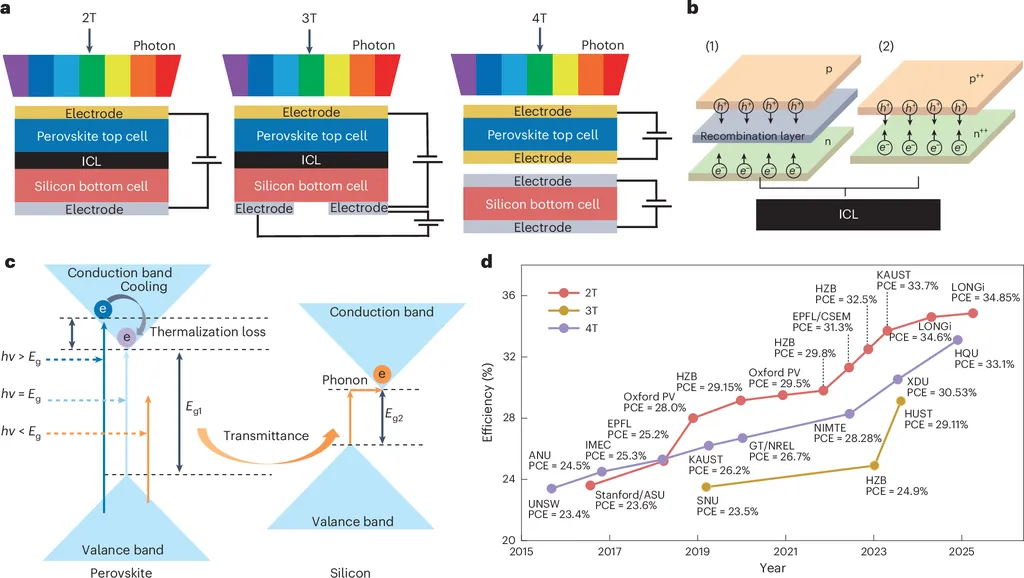Researchers from various institutions, including the FAU Erlangen-Nürnberg, the University of Oxford, and the University of Michigan, have made significant strides in improving the efficiency and stability of tandem solar cells. Their work, published in the journal Nature Energy, focuses on perovskite-organic tandem solar cells (P-O TSCs), which have shown great promise for next-generation thin-film photovoltaics.
The team, led by Chao Liu and Christoph J. Brabec, experimentally investigated the enhanced stability of p-i-n P-O TSCs. They employed a simplified interconnecting layer (ICL) structure, which achieved an averaged efficiency of 25.12% and a peak efficiency of 25.5%. This ICL structure did not require an additional charge recombination layer, simplifying the device architecture.
One of the critical findings of this study is the discovery of how recrystallization of C60, a widely used electron transport layer in perovskite photovoltaics, leads to the formation of grain boundaries during operation. These grain boundaries act as migration channels for the interdiffusion of halide and silver ions, which can degrade the device’s performance over time.
The researchers demonstrated that the tandem device architecture, incorporating organic semiconductor layers, effectively suppresses this bi-directional ion diffusion and mitigates electrode corrosion. This creates a mutual protection system where the organic layers stabilize the perovskite sub-cell by suppressing ion diffusion-induced degradation, and the perovskite layer shields the organic sub-cell from spectrally induced degradation.
This simultaneous synergistic protection mechanism enables P-O TSCs to achieve exceptional long-term operational stability. The devices retained over 91% of their initial efficiency after 1000 hours of continuous metal-halide lamp illumination and exhibited minimal fatigue after 86 cycles (2067 hours) of long-term diurnal testing. These results show that tandem cells significantly outperform their single-junction counterparts in both efficiency and stability.
For the energy industry, this research highlights the potential of tandem solar cells to provide more efficient and stable photovoltaic solutions. The simplified ICL structure and the mutual protection mechanism discovered in this study could pave the way for more practical and cost-effective implementations of tandem solar cells in various energy applications. The findings also underscore the importance of understanding and mitigating degradation mechanisms in advanced photovoltaic devices to ensure their long-term performance and reliability.
Source: Nature Energy, “A Simultaneous Synergistic Protection Mechanism in Hybrid Perovskite-Organic Multi-junctions Enables Long-Term Stable and Efficient Tandem Solar Cells”
This article is based on research available at arXiv.

